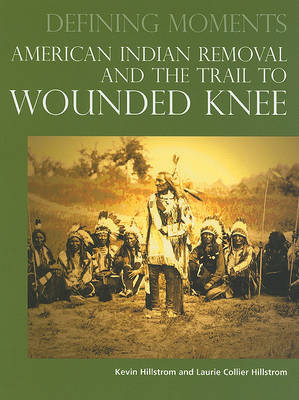Defining Moments
2 total works
American Indian Removal and the Trail to Wounded Knee
by Kevin Hillstrom and Laurie C Hillstrom
Published 1 May 2010
"Analyzes the development of Indian removal policies and the tragedy at Wounded Knee, the 1890 massacre of American Indians by U.S. Cavalry troops. Examines the wider context of Indian-white relations in America. Features include a narrative overview, biographies, primary sources, chronology, glossary, bibliography, and index"--Provided by publisher.
"Defining Moments: The Harlem Renaissance" offers a detailed, factual account of the emergence and development of this cultural movement - and its impact up to the present time. Kevin Hillstrom explores the factors that transformed Harlem into the 'Capital of Black America'in the 1920s, explains how civil rights activism of the early twentieth century made the Renaissance possible, and discusses the myriad ways in which African American literature, art, and music from the era illuminated black culture and changed the course of American race relations. iographical information is provided on leading figures involved in the movement, including civil rights philosopher W. E. B. du Bois, controversial actor and singer Paul Robeson, jazz legend Duke Ellington, and Langston Hughes, the poet laureate of the Harlem Renaissance.
A primary source section presents essential documents from the period such as Langston Hughes' famous manifesto of artistic independence, "The Negro Artist and the Racial Mountain"; dancer Frankie Manning's recollections of the glamorous Savoy Ballroom; Alain Locke's influential essay "Enter the New Negro"; and a selection of poems written by some of the Harlem Renaissance's leading literary voices.
A primary source section presents essential documents from the period such as Langston Hughes' famous manifesto of artistic independence, "The Negro Artist and the Racial Mountain"; dancer Frankie Manning's recollections of the glamorous Savoy Ballroom; Alain Locke's influential essay "Enter the New Negro"; and a selection of poems written by some of the Harlem Renaissance's leading literary voices.

